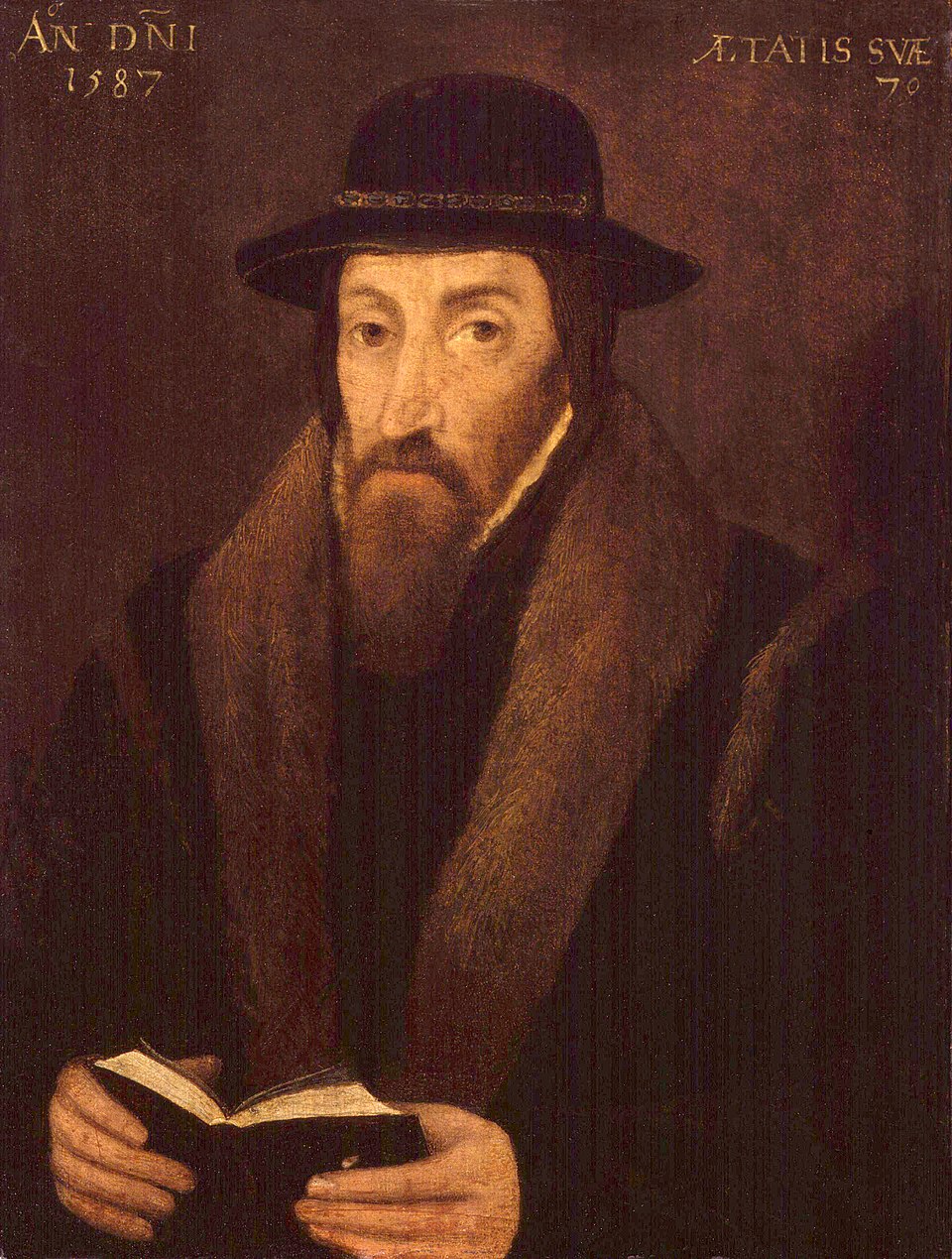
Today’s Leader of Faith
JOHN FOXE
Home Call : 18 April 1587
Martyrologist, A Committed Scholar, Author, Clergyman, Historian, Theologian, Prayer Warrior.
John Foxe (1517-1587) was known for his book Actes and Monuments, also called Foxe’s Book of Martyrs. This book tells the lives of Christians who sacrificed their lives for their faith. It especially includes the stories of 14th-century English Protestants who suffered under the rule of Queen Mary I, also known as Bloody Mary. By portraying the suffering and devotion of the martyrs with heroic vividness, this work helped shape Protestant identity. Fox held firmly to the Protestant faith, not only during the change of monarchs but even when the entire nation was shifting. His writings became a source of inspiration for strengthening the Protestant movement in England. He documented the religious atrocities of that time with clarity and impartiality. These accounts awakened a fresh spiritual awareness among the people. His writings removed fear from the hearts of many and encouraged them to stand firm in their faith with courage. Especially due to the violence of the Roman Catholics, his work gained great popularity among the English Puritans. By royal order, this book was placed alongside the Bible in many English churches. For a time, it remained in every English household and became the most widely read book after the Bible. The first Latin edition appeared in 1559, followed by the first English edition in 1563, which brought Fox immediate fame. By making it mandatory to be placed in the cathedrals of the Church of England, its size and influence grew. Although criticized by Catholic opponents for errors and bias, Fox acquired extensive primary sources. He preserved invaluable firsthand accounts of the English Reformation. A devoted scholar and prayerful man, Fox became known for his compassion and advocacy for justice, especially in his efforts to protect the persecuted Anabaptists from violence. The history he collected inspired later historians, teachers, and writers, including John Bunyan and many others.
Foxe was born in Boston, Lincolnshire, into a moderately prominent family and was known for his devotion and studious nature. He entered Oxford around 1534, eventually becoming a fellow of Magdalen College. Foxe earned his bachelor’s degree in 1537 and master’s in 1543, serving as a lecturer in logic and excelling in classical and theological studies. In 1545, Foxe resigned from Oxford after converting to Protestantism, which conflicted with the Church of England’s stance under Henry VIII. His opposition to clerical celibacy likely influenced his decision. Following his resignation, Foxe faced hardship but found support from Hugh Latimer and later worked as a tutor for Thomas Lucy’s family. He married Agnes Randall in 1547, and they had six children.
Foxe’s situation improved with the accession of Edward VI in 1547, as Protestant reform gained momentum. He moved to London, translated Protestant sermons, and found patronage under Mary Fitzroy, becoming tutor to her nephews and living in her household. This connection helped him join England’s Protestant elite. Foxe was ordained a deacon in 1550 and associated with major Protestant figures like John Bale and John Hooper. When Mary I became queen in 1553, Foxe fled England to escape persecution, eventually settling in Strasbourg and Frankfurt, where he began writing his major work on Christian martyrs. In Basel, he lived in poverty, proofreading and completing Christus Triumphans (1556). After Mary I’s death in 1558, Foxe waited abroad until Elizabeth I’s religious policies stabilized. He returned to England in poverty, living with the Duke of Norfolk. There, he worked with printer John Day and continued writing, leading to the publication of Actes and Monuments (1563), later known as Foxe’s Book of Martyrs. Though ordained a priest, Foxe held puritan views and resisted clerical conformity, remaining a humble and unambitious figure despite influential connections.
John Foxe died at the age of 70/71 in London, England. He was buried at St. Giles-without-Cripplegate, a historic church located just outside the old London Wall. The exact location of his grave within the church is not known today, but there is a memorial plaque commemorating him. His legacy lies not just in historical documentation, but in his powerful defense of conscience, faith, and religious liberty values that continue to resonate today.
— John Michael, Rajahmundry
